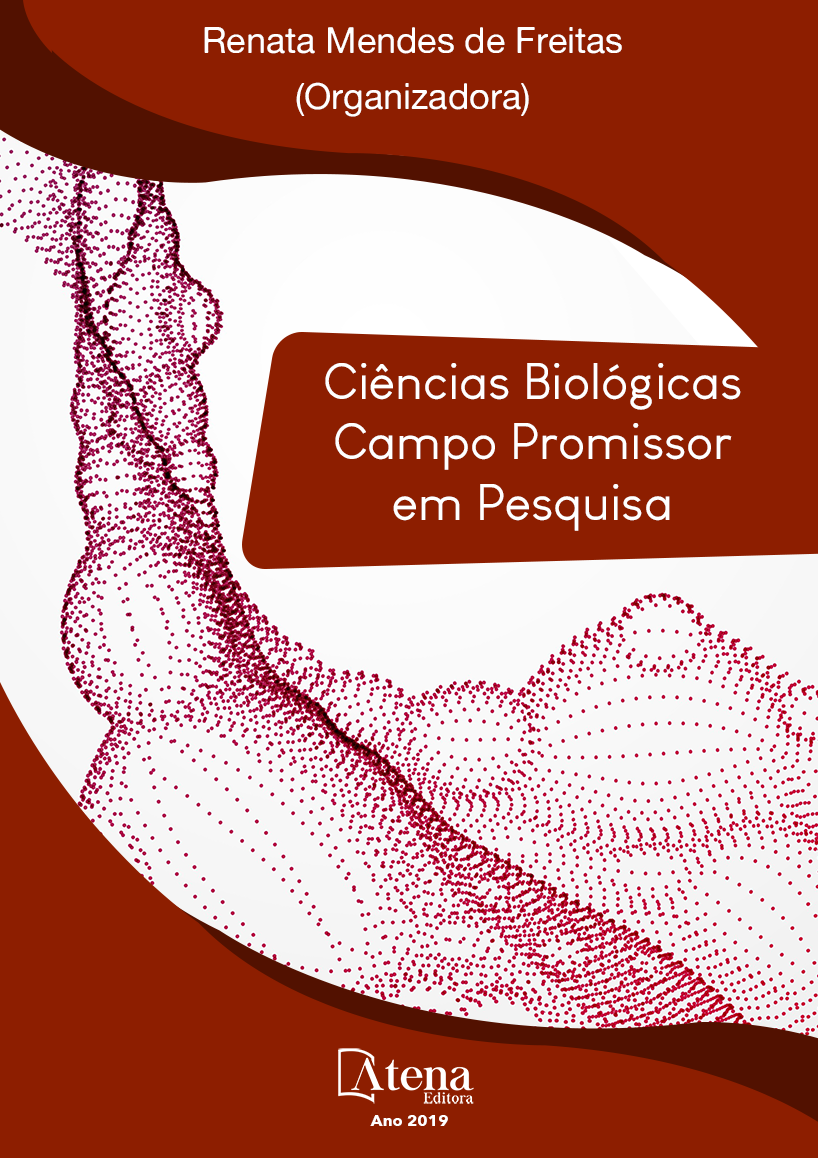
MATURAÇÃO DE BIOFILME, DISPERSÃO CELULAR E RESISTÊNCIA À ANFOTERICINA B DE UMA CEPA DO COMPLEXO Fusarium solani SOBRE CATETER VENOSO
As espécies pertencentes ao
complexo Fusarium solani possuem alta
capacidade de colonizar e formar biofilme
sobre diferentes superfícies, além de causar
patogenicidade agindo de forma oportunista.
Este trabalho objetivou avaliar a cinética da
formação de biofilmes em cateter venoso,
focando em maturação e dispersão ao longo
do tempo (24, 48, 72 e 96 horas) e avaliar a
ação antibiofilme de anfotericina B, em biofilme
pré-formado. Para avaliar a cinética e dispersão
utilizou-se os métodos de enumeração do
número de fungos cultiváveis em unidades
formadoras de colônia (UFC), biomassa do
biofilme total e atividade metabólica mitocondrial
(ensaio de redução). A atividade antibiofilme
foi avaliada após 96 horas de biofilme, com
a adição da droga (de 0,03 a 16 μg/mL) e
incubado por mais 48 horas e determinada a
concentração mínima capaz de erradicar o
biofilme. Os biofilmes de 24 horas a 48 horas
demonstraram ser em período de crescimento
com aumento dos parâmetros avaliados. A
maturação passou a ser considerada entre
48 horas e 72 horas, onde o crescimento se
manteve estável para UFC e biomassa total.
Já a dispersão ocorreu a partir de 72 horas
a 96 horas, quando houve diminuição dos
parâmetros avaliados UFC, biomassa total e
atividade metabólica mitocondrial. Foi possível
observar que não ocorreu a inibição do biofilme
da cepa do complexo F. solani em nenhuma das
concentrações estudadas, havendo crescimento
do fungo recuperado após 48 horas em contato
anfotericina B. Assim, conclui-se que o biofilme
formado de F. solani se matura em 48h e a
partir de 72h começa a dispersar-se, podendo
organizar-se e formar um novo biofilme, além
de mostrar-se resistente à anfotericina B.
MATURAÇÃO DE BIOFILME, DISPERSÃO CELULAR E RESISTÊNCIA À ANFOTERICINA B DE UMA CEPA DO COMPLEXO Fusarium solani SOBRE CATETER VENOSO
-
DOI: 10.22533/at.ed.81919131113
-
Palavras-chave: Fusarium solani, biofilme, dispositivo médico, resistência a poliênico.
-
Keywords: Fusarium solani, biofilm, medical device, poliene resistance.
-
Abstract:
The species belonging to the Fusarium solani complex have a high
capacity to colonize and form biofilm on different surfaces, besides causing opportunistic
pathogenicity. This study aimed to evaluate the kinetics of biofilm formation in venous
catheters, focusing on maturation and dispersion over time (24, 48, 72 and 96 hours) and
to evaluate the amphotericin B antibiofilm action in preformed biofilm. To evaluate the
kinetics and dispersion we used the methods of enumerating the number of cultivable
fungi in colony forming units (CFU), total biofilm biomass and mitochondrial metabolic
activity (reduction assay). Antibiofilm activity was evaluated after 96 h of biofilm, with
the addition of the drug (from 0.03 to 16 μg / mL) and incubated for a further 48 h and
the minimum concentration capable of eradicating the biofilm was determined. The 24
to 48 h biofilms were shown to be growing with increasing the evaluated parameters.
Maturation was considered between 48 and 72 h, where growth remained stable for
CFU and total biomass. Already the dispersion occurred from 72 to 96 h, when there
was a decrease in the parameters evaluated CFU, total biomass and mitochondrial
metabolic activity. It was observed that there was no inhibition of the F. solani complex
strain biofilm in any of the studied concentrations, with growth of the fungus recovered
after 48 h in contact with amphotericin B. Thus, it is concluded that the F. solani biofilm
formed maturity within 48h and from 72h onwards it begins to disperse and can organize
and form a new biofilm, and is resistant to amphotericin B.
-
Número de páginas: 8
- Terezinha Inez Estivalet Svidzinski
- Flavia Franco Veiga
- Melyssa Fernanda Norman Negri Grassi
- Alana Fernanda Luzia Salvador


